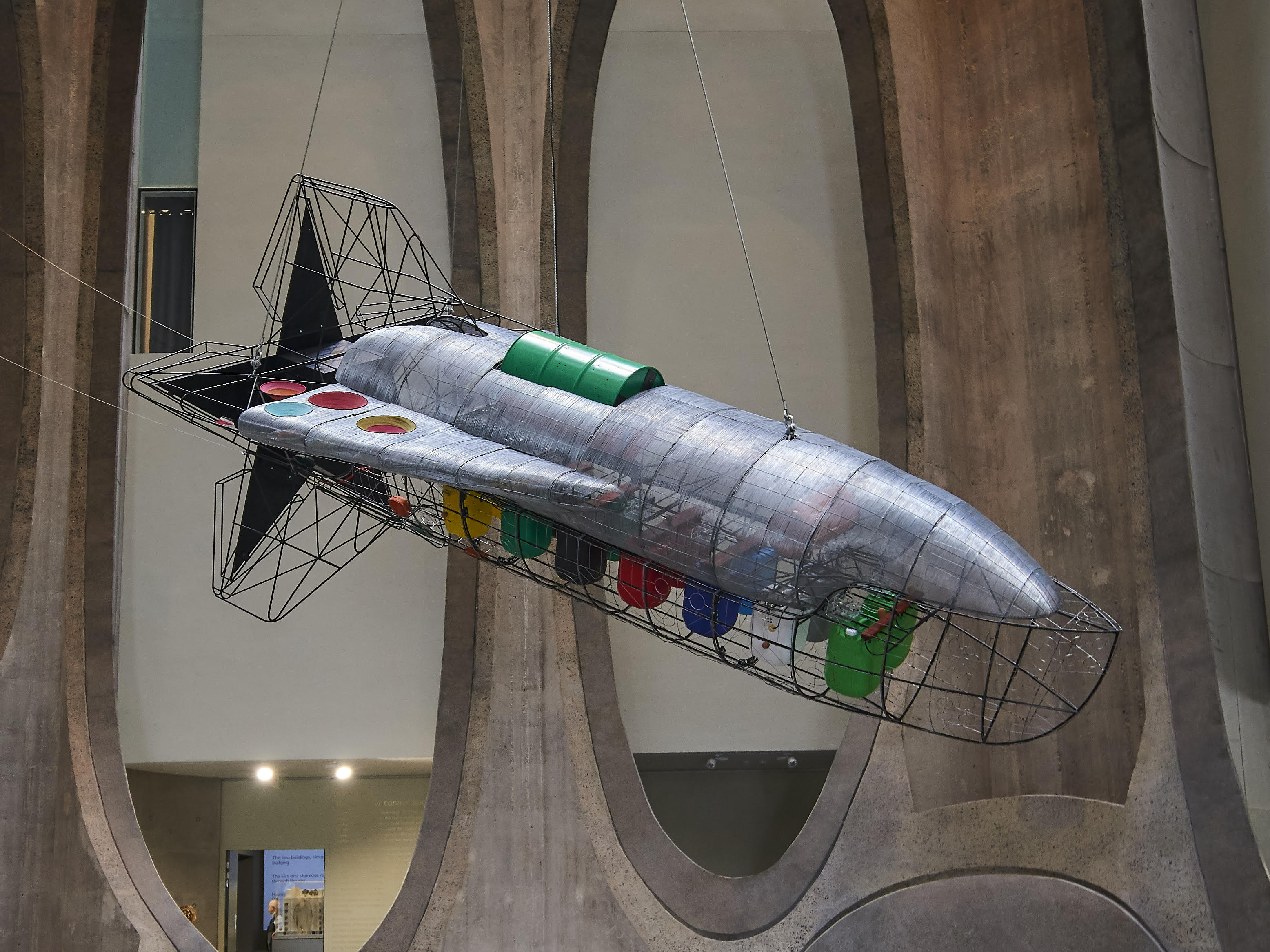Working with technology offers too a medium for communication to audiences, particularly broader publics. Technology is a form of spectacle, a form of offering pleasure and excitement to audiences. Within the pleasure, critical ideas can be carried
Sanya Osha talks with Ralph Borland about Wire Art
Albert Road in Woodstock, Cape Town exudes a mixed aura combining the old and the new. During ‘normal’ working hours, there isn’t much to say about the high-rise buildings, organized commerce, practices of everyday life and the general 9am to 5pm diurnal rhythms. As with every other major South African metropolis, there are loudly honking commercial buses (called taxis in the country) in flight or fight mode engaged in dare-devil driving. The security guards visible everywhere remind you that crime and violence are a moment-to-moment reality. Of course, nighttime in the vicinity births an entirely different scenario where all sorts of creatures spring out of the woodwork. But it is also a road where artists maintain studios to pursue their various artistic dreams.
The complex where Ralph Borland runs his studio is no different from the Albert Road atmosphere. Filled with other artists’ studios, the complex looks austere, safe and productive. I didn’t catch whiffs of marijuana or sight scraggly crowds of freeloading artists partying up a storm with their shirts off.
Ralph’s studio is occupied by a large spaceship-like installation that takes up most of the space. Otherwise, it remains spare and fastidiously functional. Perhaps a safe way to describe Borland is that he is a multi-media artist who strongly believes in the merits of technology for fostering understanding and social good. Meanwhile, he has taken aspects of his work into virtual reality which, amid the COVID-19 pandemic, makes absolute sense as a way to generate novel three-dimensional realities, creative interactions and experiences.
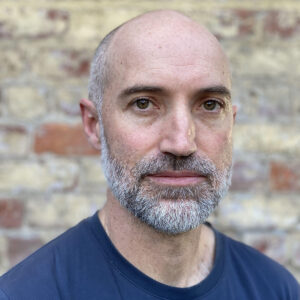
If the workman-like ambience of his studio seems so spare, Ralph’s mind, on the other hand, is buzzing with exciting creative ideas. There looms Marcus Garvey, the early 20th century Jamaican liberator of blacks with his Black Star ocean liner to transport formerly enslaved Africans back to the motherland from the New World. This idea segues into Afrofuturism and possibly a utopia defined by cosmic liberty and enlargement. There are intimations of George Clinton and the Parliament-Funkadelic collective together with the mothership connection. There are also the spirit of Sun Ra and the powerful motif of escape and celestial magnitude and infinity.
Back to reality, Borland has also been involved with street artists engaged in wire art from Cape Town to Zimbabwe, Mozambique and Brazil. He seeks to traverse the divide between academic art and street art. He is indeed besotted with technology as evidenced in his fascination with spaceships and notions of time travel.
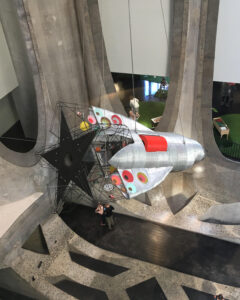
Time itself is a thoroughly philosophical subject conceptually split as it is between the African phenomenon of cyclicity and western-defined linearity. If Cartesian rationality and Hegelian dialectics seem to be hegemonic it is possible for this perspective via only minor sleights of conceptual shift to become relative and relational. The underside of scientific cognition is primarily what informs our imaginations, dreams and neuroses. And it an underside structured by its own language and logic as Freudian psychoanalysis strongly suggests. Borland would sometimes imply that the implacable dichotomization of perception between the conscious and unconscious, the rational and irrational, can be overcome through irreverent conceptual play, non-intentional friskiness and hybridity.
This state of affairs would appear to celebrate the entombment of metaphysics including agnosticism and atheism. As a final measure, the sacrificial lamb is set free never to be sighted again. The deity is within, shrouded in the autonomous light of its own blinding independence. A comparable metaphor would be the image of a girl frolicking on a bright sun-kissed field totally ignorant of the omniscient power of her own luminous reflection. In other words, the little girl is the new self-sufficient reality, a post-metaphysical borderless being in whose unfathomable presence the universe awaits its rejuvenation and in fact, its re-creation.
In simpler terms, Borland interrogates the schism between art and science. Perhaps it isn’t always useful to maintain the conceptual separation between the two domains if only to enlarge our imaginations. Art and science constitute most of our intellectual existence and more specifically, epistemic architecture. Furthermore, in an ideal world, art and science combined form a horizontally arranged epistemological totality. But in a (pseudo) epistemic culture driven by false hierarchies, binaries and rabid technologies of domination it is often seen as necessary to maintain epistemic divisions in order to further entrench all manner of inequalities; racial, sociopolitical, economic and least of all, cultural.
At the heart of this aesthetic philosophy are yearnings for mutuality and solidarity, a social technology of care, so to speak. Indeed, mutuality and solidarity are important aspects of Borland’s practice as he often works with multiple artists with different backgrounds, specializations, expectations and material requirements. Ultimately, all that counts is realizing mutual objectives.
The question may be posed; what lies between man and machine? The minds of man and machine converge to create new realities, possibilities and also perhaps, nightmares. In this sense, stasis would appear to be a nightmare while adventure and escape offer remedies to the cultural quagmires it (stasis) creates. And so, a sorely required project for our common humanity would be to conjure a marriage of man and machine in order to birth a new ethos of being. Most probably, this would lead to a catharsis of liberty, a relentless unfurling without limits.
The idea of bricolage often comes to mind; concepts, objets d’art and objectives are seemingly whisked out of possibly thin air only to materialize like fully formed doppelgangers. Indeed, the allure of the conjurer as a shape-shifting, chameleonic entity is all too powerful. A trickster deity in the making. Totally fabricated worlds separate from mundane reality have indisputably been the most cherished ambition of current commercial cinematography. There are connections and synergies between animate and inanimate entities, at least, ideationally. These synergies promise untold and therefore unknown possibilities, the magical fruit that may or may not be rotten at its foreboding core. This seems to be the kind of universe Borland seeks to create, if not realistically, then at least conceptually.
In a world oftentimes seamlessly polarized between the rich and the poor, further objectified and banalised by hunger, squalor, disease and death, reality becomes science fiction and vice versa. Indeed, the ontologies of science fiction hold far more believable promises of redemption. And so, we’d rather leverage our bets on elusive projections as with uncontrollable visits to gambling dens. Salvation might be just a few seconds away.
Given these vortex-like conceptual linkages between art and commerce, street art and academic art, Garvey, normal science and abnormal science, Black Lives Matter, mothership vibrations, George Clinton, Sun Ra, cosmic superhighways and freedom, Borland appears to want to transform himself into an engineer of potentiality, futurity and possibility. In this interview, he further explains his ideas and efforts to realize them.
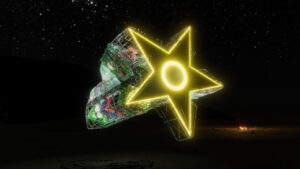
What are your initial motivations and inspirations for working on wire art?
I made my first – actually my only – wire car when I was about 14 years old, in Harare, Zimbabwe when I was at high school. I had seen wire cars around me, probably for sale in the streets, as well as being pushed along by kids; they were a popular image of Africa as well, so reproduced in films, TV and in print. I wanted to make one myself, and made a small Citroen 2CV – there was a 2CV that drove around Harare, and I thought it was a great little car. I also made jewelry with copper wire, and scooby wire (telephone wire) when I was a teenager. Scooby wire jewelry was a popular style, probably based on work from KwaZulu Natal. It was part of identifying with an African identity too for me I would say, in the politicized environment of the 1980s and 90s in South Africa and Zimbabwe, learning to make vernacular popular culture items out of available materials, and to adorn myself with them. I think this is part of teenage identity formation, to want to acquire and wear symbols of belonging.
As an adult, and after many years of studying and making art, my interest in wire art remained. It’s about an interest in making – how people use materials around them to depict the world; and in the context of street wire art, how people make a living from making and selling art. My interest in art has always been broad, and I like to identify (or I identify with) modes of creativity outside of the art world as well as within it. I’m fascinated by how techniques and ideas get passed around – how do kids tell the same jokes, play the same games or sing the same songs in different locations? How is it passed on? With wire art, I could see something similar happening: the same or similar forms made in different places. I noticed particular stand-out designs, like characters from movies, which became popular and proliferated. I wondered if I could catalyze new designs in the street wire art scene, which if they were popular would get carried through the network like a virus.
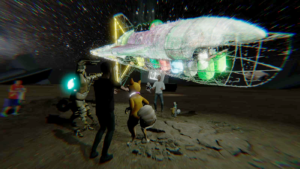
How has been the experience so far? The highs, lows, dashed expectations and triumphs? Would you like to comment on that?
The high point in this project has been the realization of…

